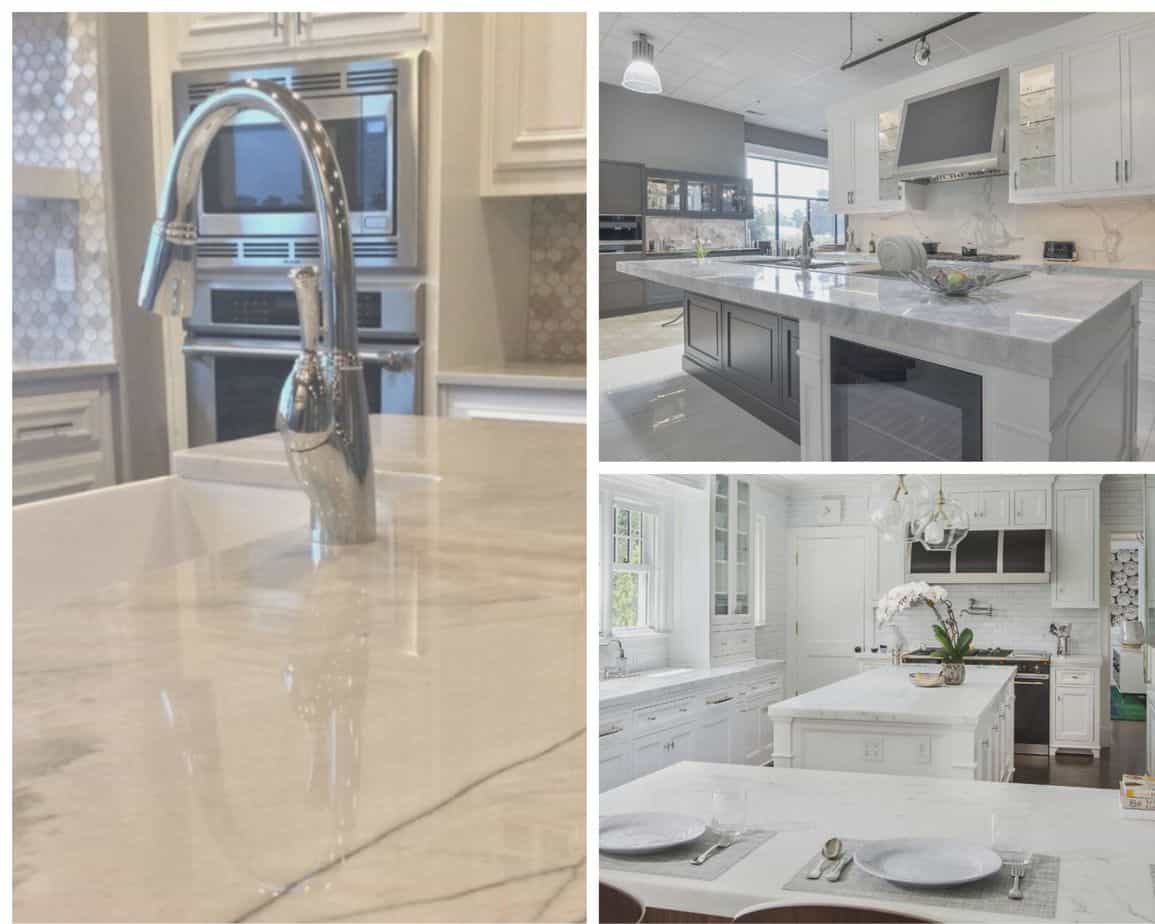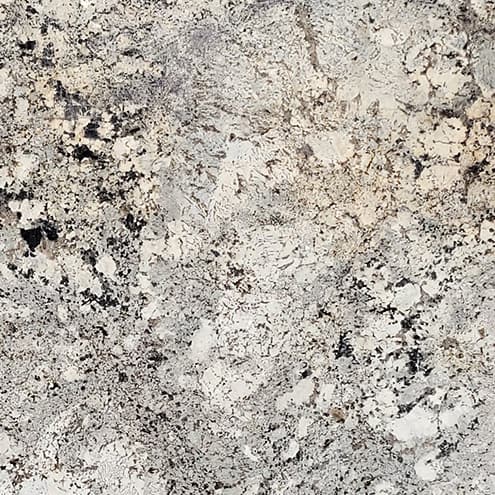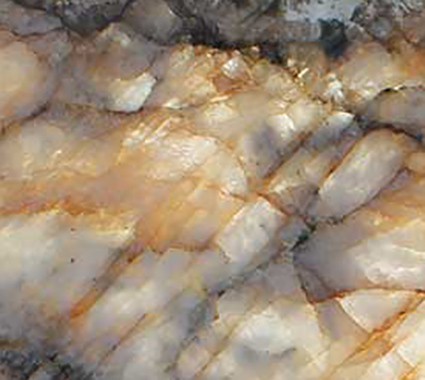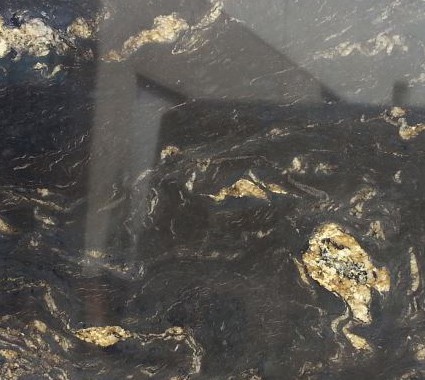Choosing between marble and quartzite countertops for your new kitchen countertops can be a tough decision. Both are natural stone, are known for their elegance, and are beautiful. Both choices can increase the value of your home. With so many similarities, the only way to make an informed decision is to consider the differences between the two surfaces. The answer depends on your lifestyle, budget, and overall goals.
Composition of Marble and Quartzite
When making the decision between the two countertops, you may first ask what exactly they are made of and where they originate. Both marble and quartzite are metamorphic rocks – they began as sedimentary rocks, but the application of heat and pressure changed their structure.
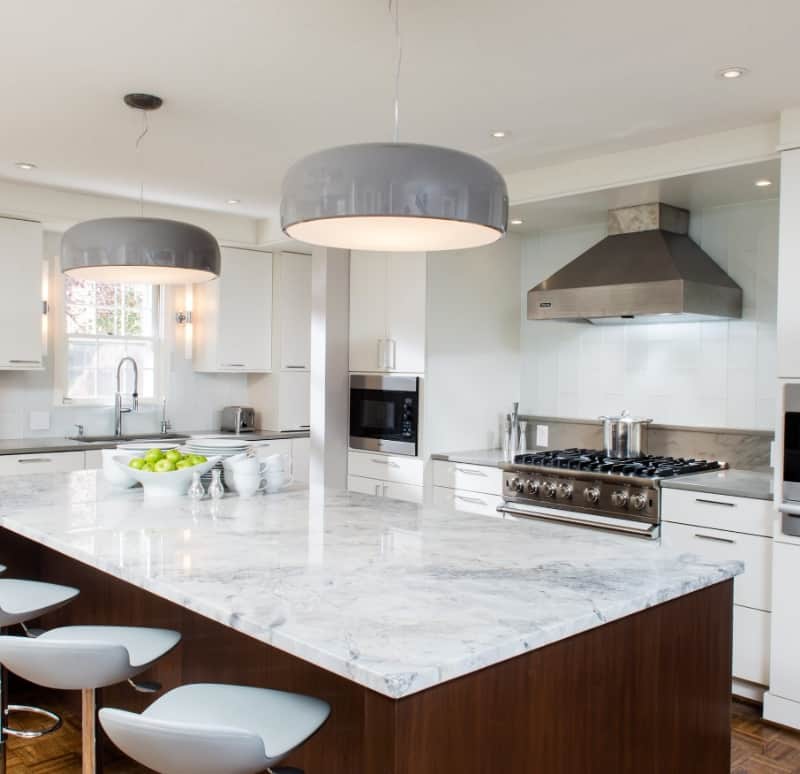

Marble originates from limestone or dolomite. It is composed primarily of calcite and is a relatively soft stone. Due to its composition, marble is prone to etching and other damage when it is exposed to liquids containing acids, such as lemon juice or tomato sauce.
Quartzite originates from sandstone containing quartz crystals. This results in unique patterns not found in other types of natural stone, as shown in White Macaubas Quartzite. The quartz grains have become fused together, making the resulting quartz countertops hard and durable, and less prone to staining and damage.
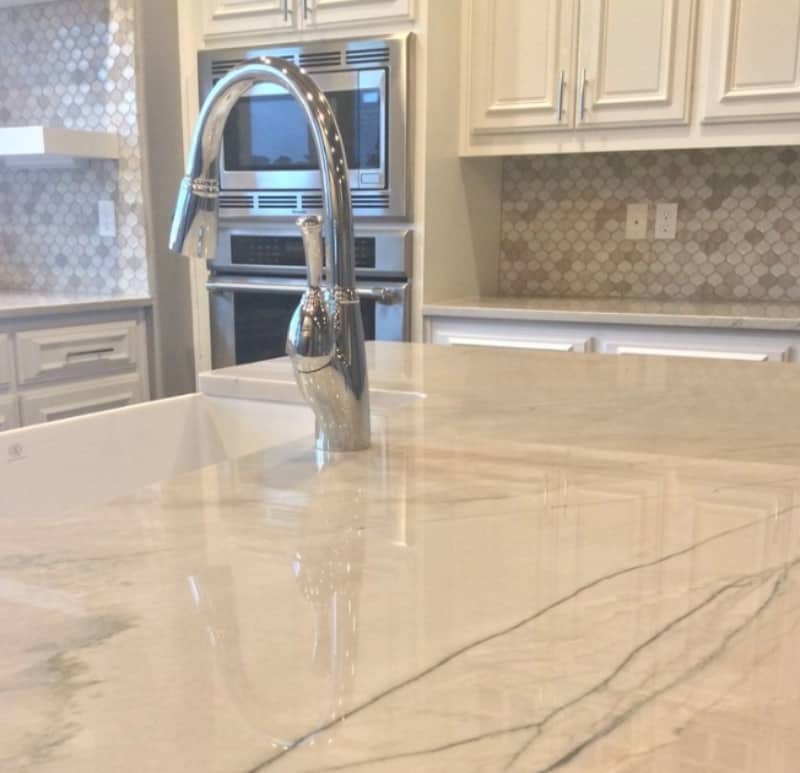

Maintenance Needs
Marble is a highly prized material for surfaces, including floors and backsplashes as well as countertops. However, it is porous, which means that it absorbs liquid. This makes it vulnerable to damage and staining unless it is regularly sealed to make it water-resistant. Also, homeowners with marble countertops must take care to use cleaning products that are specially formulated for use on marble, as they are pH neutral and will not damage the surface. This is particularly important with light-colored marble countertops such as Rhino White, although many homeowners would say that the extra work is well worth the result.
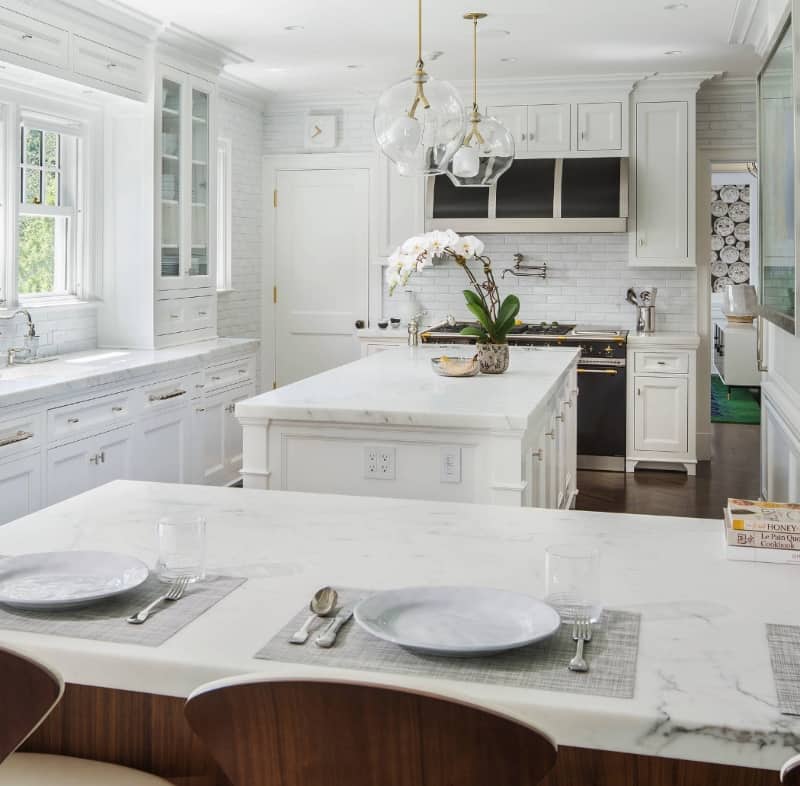

Quartzite is considered a non-porous material. Although we recommend applying a sealer to all-natural stone, quartzite countertops will need to be sealed much less frequently than marble. Everyday cleaning can be done with a mild cleanser, such as diluted dish soap. Since some types of quartzite closely resemble marble, such as Calacatta Quartzite, you can enjoy the look of marble for less work and worry.
Budget
Due to its upscale reputation, many homeowners assume that marble is more expensive than quartzite. However, the price varies widely depending on the type of marble, its country of origin, and its quality. Some marble, such as Calacatta Vagli, is priced at the upper end of the spectrum. But since Carrara marble is very popular and readily available, it is often sold at a lower price point than quartzite countertops. In fact, some unscrupulous dealers try to pass off lower-cost marble as higher-priced quartzite. Make sure you buy your quartzite countertops from a reputable dealer.
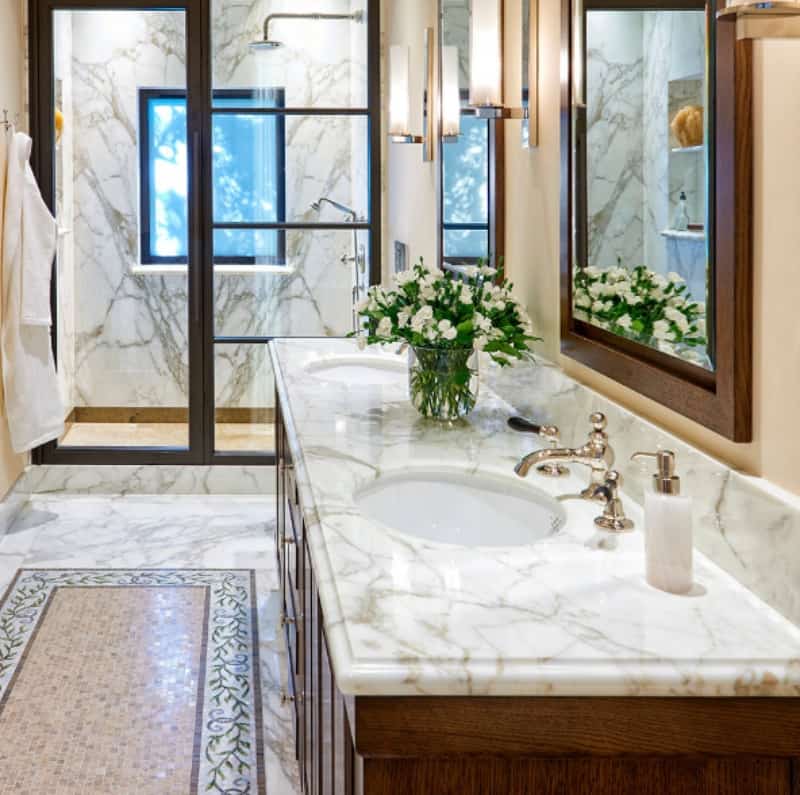

One way to know for sure you’re getting the perfect countertop for your budget, lifestyle, and other preferences is to visit the BEG San Diego and San Marcos showrooms. At the San Diego slab yard or the San Marcos slab yard, you can choose the exact piece of stone that will be installed. For more information on these and other fine countertop options, browse our helpful Countertops Guide.


